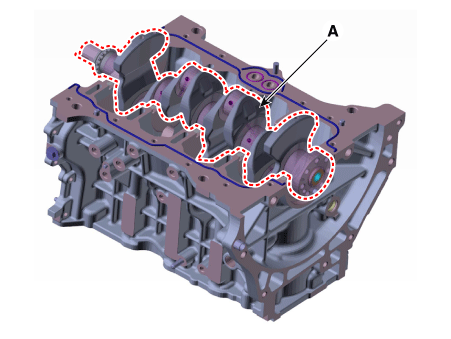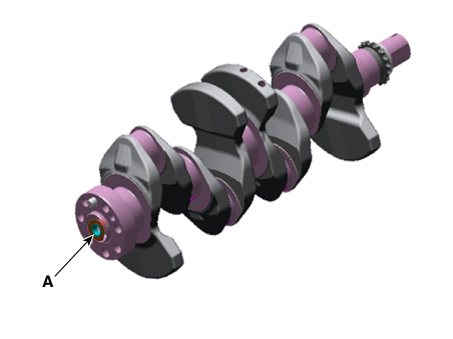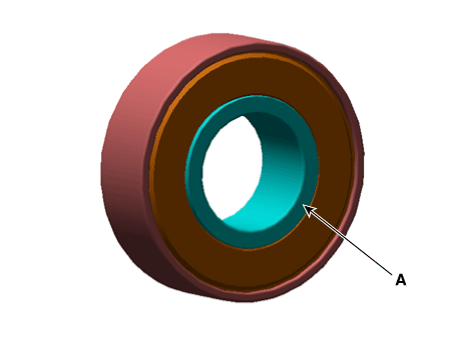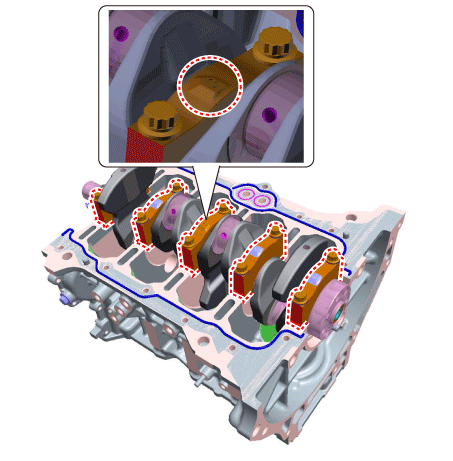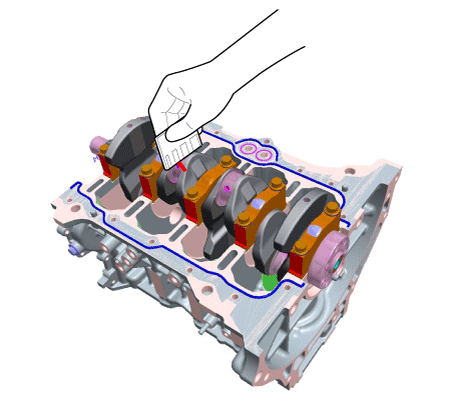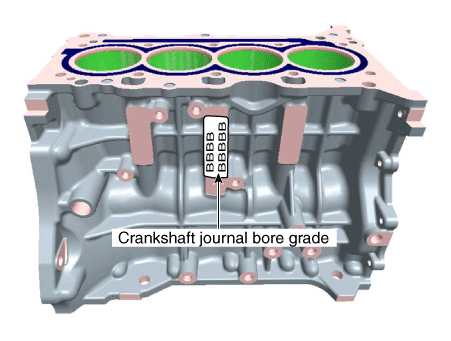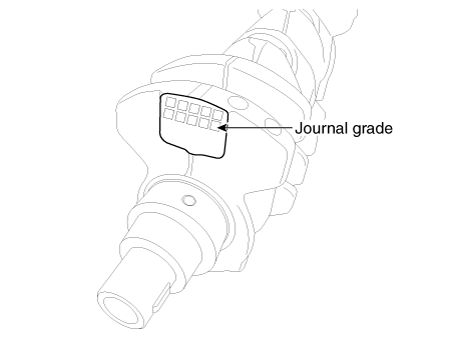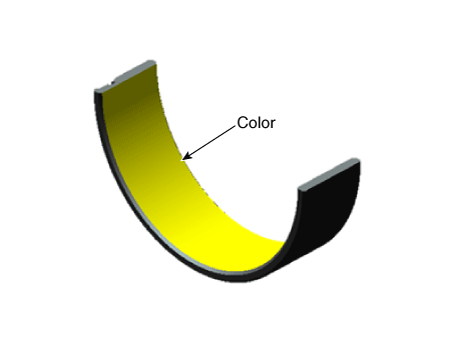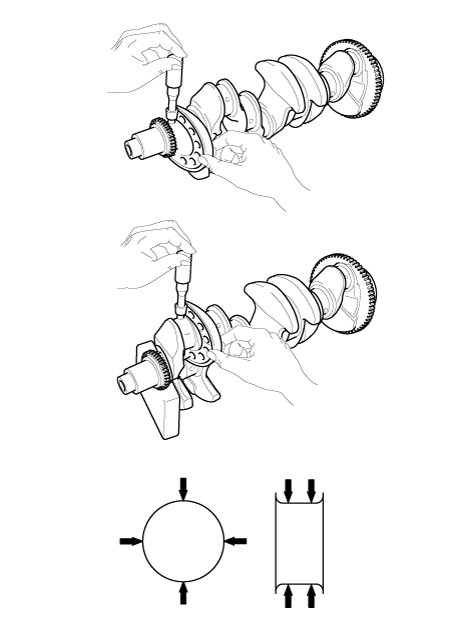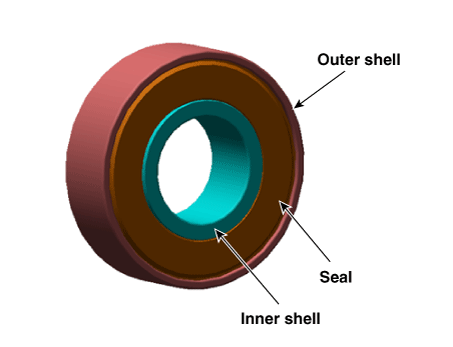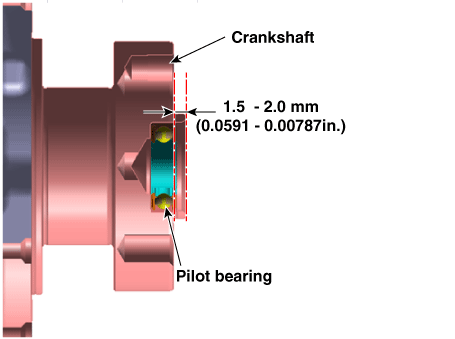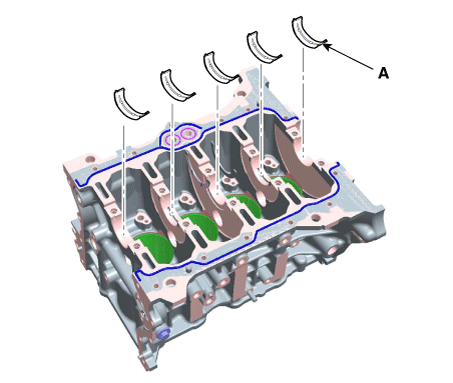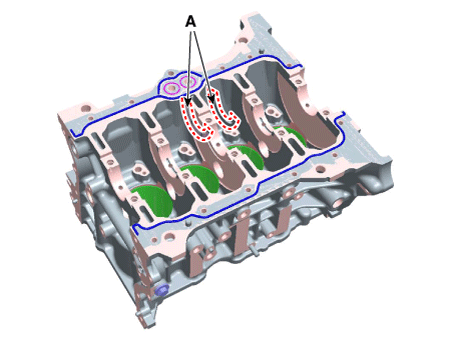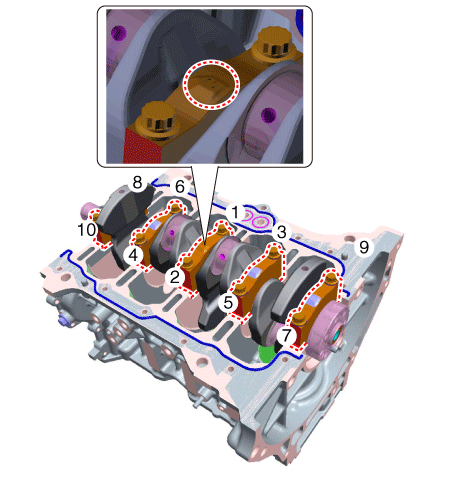Kia Niro: Cylinder Block / Crankshaft Repair procedures
| Disassembly |
|
|
Mark all wiring and hoses to avoid misconnection. |
| 1. |
Shut off the high voltage circuit. (Refer to Engine Mechanical System - “High Voltage Shut off Procedure”) |
| 2. |
Remove the engine assembly from the vehicle. (Refer to Engine and Transaxle Assembly - “Engine and Transaxle Assembly”) |
| 3. |
Remove the dual clutch transmission .(Refer to Dual Clutch Transmission (DCT) - "Dual Clutch Transmission Assembly") |
| 4. |
Install the engine to engine stand for disassembly. |
| 5. |
Remove the intake manifold. (Refer to Intake and Exhaust System - "Intake Manifold") |
| 6. |
Remove the exhaust manifold. (Refer to Intake and Exhaust System - "Exhaust Manifold") |
| 7. |
Remove the hybrid starter generator (HSG). (Refer to Hybrid Motor System - "Hybrid Starter Generator (HSG)") |
| 8. |
Remove the timing chain. (Refer to Timing System - “Timing Chain”) |
| 9. |
Remove the Cylinder head assembly. (Refer to Cylinder Head Assembly - "Cylinder Head") |
| 10. |
Remove the fly wheel. (Refer to Cylinder Block - "Fly Wheel") |
| 11. |
Remove the thermostat. (Refer to Cooling System - "Thermostat") |
| 12. |
Remove the water pump assembly. (Refer to Cooling System - "Water Pump") |
| 13. |
Remove the A/C compressor. (Refer to Heating, Ventilation Air conditioning -"Compressor") |
| 14. |
Remove the oil filter. (Refer to Lubrication System - "Engine Oil") |
| 15. |
Remove the oil screen. (Refer to Lubrication System - "Oil Pan") |
| 16. |
Remove the piston and connecting rod assemblies. (Refer to Cylinder Block - "Piston and Connecting Rod") |
| 17. |
Check the crankshaft main bearing oil clearance. |
| 18. |
Check the crankshaft end play. |
| 19. |
Lift the crankshaft (A) out of the engine, being careful not to damage journals.
|
| Inspection |
Pilot Bearing
| 1. |
Inspect the pilot bearing.
|
Crankshaft
| 1. |
Check the crankshaft bearing oil clearance.
|
|||||||||||||||||||||||||||||||||||||||||||||||||||||||||||||||||||||||||||||||||||||||||||||||||||||||||||
| 2. |
Check crankshaft end play. Using a dial indicator, measure the thrust clearance while prying the crankshaft back and forth with a screwdriver. If the end play is greater than maximum, replace the center bearing.
|
| 3. |
Inspect main journals and crank pins. Using a micrometer, measure the diameter of each main journal and crank pin.
|
| Reassembly |
|
| 1. |
Check if the pilot bearing (A) is installed in the crankshaft when replacing the crankshaft or short engine. If being not installed, be sure to install the pilot bearing (A).
|
| 2. |
Install the crankshaft main bearings.
|
| 3. |
Install the thrust bearings. Install the 2 thrust bearings (A) on both sides of the No.3 journal of the cylinder block with the oil groove facing out.
|
| 4. |
Place the crankshaft (A) on the cylinder block.
|
| 5. |
Install the main bearing caps and tighten the cap bolts.
|
| 6. |
Check the crankshaft end play. |
| 7. |
Install the other parts in the reverse order of disassembly.
|
 Piston and Connecting Rod Repair procedures
Piston and Connecting Rod Repair procedures
Disassembly
•
Be sure to read and follow the “General Safety Information and
Caution ...
 Cylinder Block Repair procedures
Cylinder Block Repair procedures
Disassembly
•
Be sure to read and follow the “General Safety Information and
Caution ...
Other information:
Kia Niro 2017 (DE HEV) Service Manual: General information
Identifying a Kia Niro
"Eco Hybrid" logo on tail gate
The Kia Niro can be easily identified by the "Eco Hybrid" logo attached on the
tail gate.
Electrocution Risk
The hybrid logo can becom ...
Kia Niro (DE HEV) Owners Manual: Power window lock button
The driver can disable the power window switches on the rear passengers’ doors
by pressing the power window lock switch to the lock position (pressed).
When the power window lock switch is pressed :
The driver’s master control can operate the front passenger’s power window
and the ...




